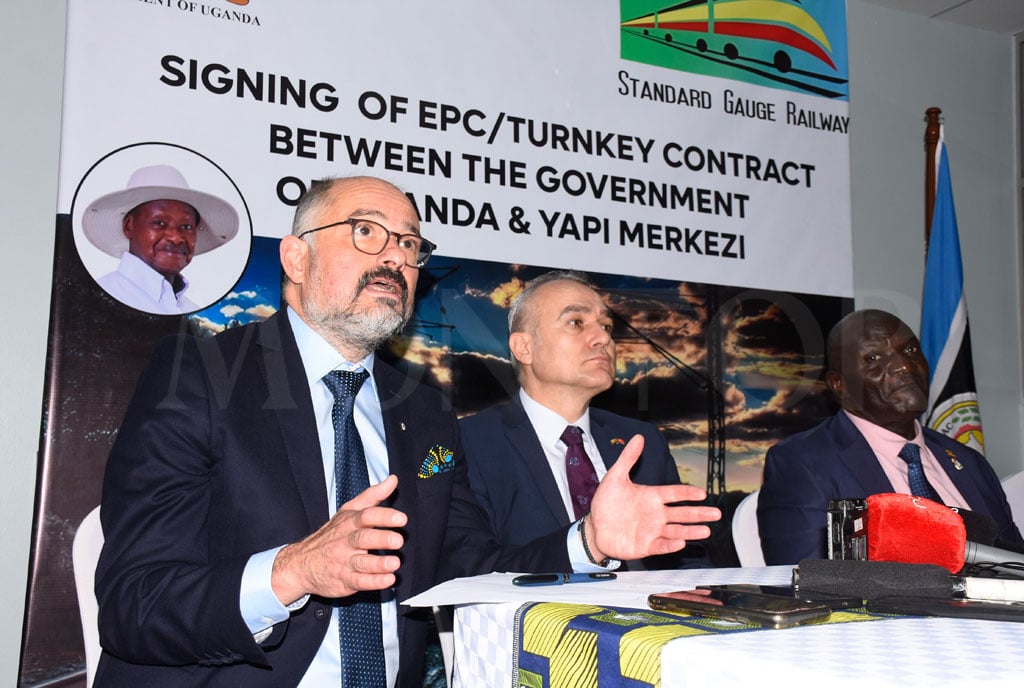
On Monday, Kampala and Turkish construction firm Yapi Merkezi signed a contract to build a 272-kilometre section of Uganda’s Standard Gauge Railway (SGR).
The agreement was for the first section of a planned 1,700-kilometre electric rail line, running from Kampala to Malaba at the border with Kenya. It is then supposed to connect to Kenya’s SGR and then to Mombasa.
This phase of the project, which will cost at least Shs10.8 trillion ($3 billion), is expected to commence in about 42 days from October 14 with completion due in four years - i.e. November 25, 2028.
The railway will be built, but it won’t be delivered in November 2028, and it won’t be for lack of trying. After all, the SGR was initially planned to be completed in 2018.In the last 24 years, President Yoweri Museveni has been unable to deliver projects of this scale on schedule. Take the most glorified, and most awaited of them all, oil. It was supposed to come to market in 2020. It didn’t.
The goalpost was moved to 2023. Nothing. Then a shiny deadline of 2025 was posted. Now, according to several solid reports on this, including a recent one from NTV (Uganda), a more realistic target is 2026/2027.
The Karuma Hydropower project was supposed to be completed by 2018. It was completed six years late in September this year. The Kampala-Jinja-Expressway is supposed to be nearing half-way, with a completion date of 2027. But after all the dazzling engineers’ drawings, not a single stone has been laid, for it. Uganda is in a phase where the completion of a big project by the government is a miracle.
And those miracles need miracles to happen. There are two popular explanations: One, is that after 38 years, the Visionary Leader is tired and has run out of bandwidth to manage complexity. Therefore he is focusing nearly all his efforts on the one thing with the highest return – clinging to power. Secondly, that corruption has grown into a monster that is killing all good things.
I don’t buy into the “Museveni is tired” line, though obviously he is no longer a spring chicken. That is because getting Uganda ticking doesn’t need long exacting hours at the desk. It requires a spark of imagination. On the latter, yes, corruption has become a big dream killer and a big thief of Uganda’s future. But it is how much the forces of corruption have seized political power, and captured state policy that is most deleterious. The Corruption Establishment has become the first force not only to establish a balance of power with the Museveni government and power apparatus but to have greater control over the Uganda state.Still, the above tells us little about how Uganda got to this point.
Several things happened for that. Among them, the ruling National Resistance Movement (NRM), once a formidable party, had to shrink. It is mind-blowing that today, some of the more effective power creations of the NRM, like the local councils have been reduced to a shadow of themselves. LC elections are perennially delayed, and in most parts of the country, young people don’t know what a Local Defence Unit (LDU) is.The withering of the NRM was also a result of a massive withdrawal of public political consent from it.
Since 2001, marked by Col Kizza Besigye’s challenge of Museveni for the presidency, the state has been bleeding legitimacy. It responded by upping the deployment of raw security power, but it became like the warrior who married the unhappy captive bride who would never love him. Generally, as 2001 revealed, Ugandans can only thrive in captivity for 15 years.
If the Museveni state had granted them greater freedom, the results on the economy and the face of the country would be spectacular today.The world, and the region, also changed. Consider that in November 2002, as an economy and geopolitical player, Uganda was virtually alone as the shining house on the hill in the region. However, Tanzania completed its second post-Nyerere transition. Hassan Mwinyi gave way to the more reformist Ben Mkapa in 1995.
In 2000 Mkapa got re-elected for a defining last term. In the same year, Paul Kagame, formerly vice president, was elected president of Rwanda and embarked on a dramatic turnaround of the country’s fortunes. In December 2002, in Kenya Mwai Kibaki led the opposition to East Africa’s first defeat of a long-ruling party, and opened a game-changing chapter in Kenya’s life.
And just like that, Uganda was no longer the coolest party around. Yet, even under Museveni, a great Ugandan renewal, and a democratic rebirth, are still possible. Even though delayed, the miracle of the SGR and others will come. That would still be good enough, for as the people of the book and cloth say, a delayed miracle is still a miracle.
Mr Charles Onyango-Obbo journalist, writer, and curator of the “Wall of Great Africans”. Twitter@cobbo3





